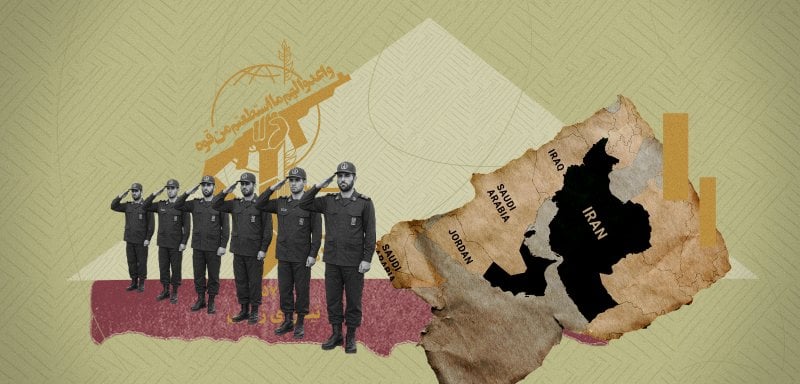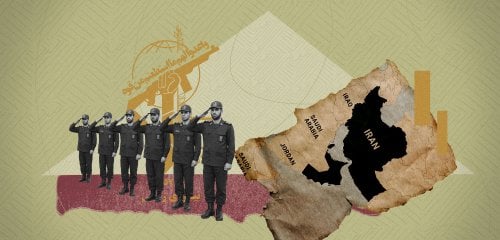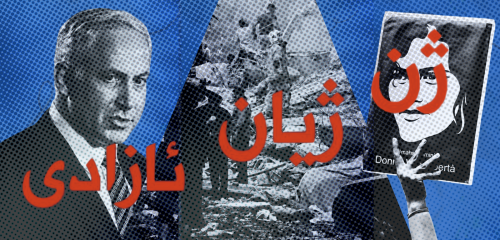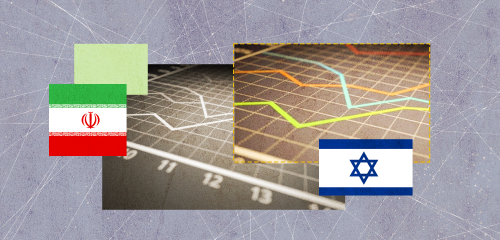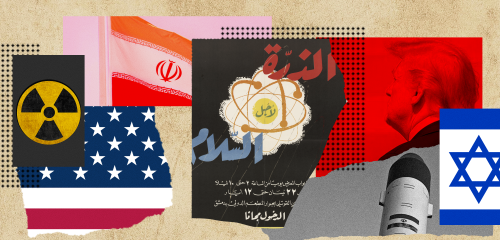“As we achieve our objectives, we are also clearing the path for you to achieve your freedom,” said Israeli Prime Minister Benjamin Netanyahu. Netanyahu, who has a warrant out for his arrest by the International Criminal Court (ICC), was addressing the Iranian people after the Israeli attacks on Iran in early June, which had led to power vacuums within Iranian leadership.
However, contrary to expectations, the Iranian public rallied around their flag and state – a response that was framed in Iran as a show of popular support for Tehran’s mullah regime.
During this period, all prominent figures of Iran’s domestic opposition – including leaders of ethnic and religious minorities – issued statements opposing the aggression and affirming the need to unite around the Iranian nation. Community and public support also became evident in the lack of response to calls for protests and demonstrations, with any suspicious activity being swiftly reported. This, according to the International Institute for Iranian Studies (Rasanah), reflected a national cohesion that emerged from the heart of war, subsequently granting the regime renewed moral and military strength and support to confront its enemies’ ambitions.
In contrast, the popularity of the external opposition – particularly the monarchist movement – declined due to their pro-war stance.
“This nation was forged in the school of martyrs and will vigorously defend the Islamic entity,” said Mehdi Karroubi, leader of the opposition Green Movement. He added: “Today, with the resolute will of the nation, we will never surrender... National unity is our most important weapon.”
Former Iranian president and reformist opposition figure Hassan Rouhani said the “faith, knowledge, and resilience of Iranians” would help “rebuild the path of national strength.”
Azar Mansoori, Head of the Iranian Reformist Front, stressed that “the priority for all Iranians” now is “unity in the legitimate defense of this great land.”
Meanwhile, Hosein Marashii, Secretary-General of the Executives of Construction Party, stated that “comprehensive defense of beloved Iran requires the participation of the people, and the measures, efforts, and steadfastness of the leadership.”
“The 1979 Islamic Revolution was driven partly by fury over decades of American interference in Iran. The theocratic government that came to power was a direct consequence of America’s last attempt to enact regime change in Iran.” So what is it that keeps the Iranian street “united” and "cohesive" in times of crisis?
Before this, the Iranian streets had witnessed a number of protest movements – from the student protests of 1999, to the Green Movement in 2009, the 2017 fuel uprising, and the Mahsa Amini uprising of 2022. These uprisings, along with others in between, all carried political demands – some of which called for the overthrow of the regime.
In light of renewed attempts to inflame Iranian unrest through Israeli strikes, evaluating the chances of a potential popular uprising requires an analysis of the regime’s internal security apparatus, according to the IRAM Center for Iranian Studies. The fact that key structures designed to suppress civil unrest – such as the Sarallah (Thar-Allah) Headquarters and the Basij militia – were not targeted indicates that the regime’s internal surveillance and “core instruments of domestic control remain intact.” These structures are key to maintaining social order and are cornerstones of regime security, playing a central role in suppressing past uprisings.
After citing additional vulnerabilities – like the absence of a unifying charismatic leadership, concerns about separatist ethnic movements, and the chaotic experiences of Iraq, Syria, and Libya – the IRAM study concluded that foreign Israeli interventions do not weaken the Iranian regime. Instead, they bolster its internal resistance, cohesion, and security measures.
"We don't want a manufactured state"
Israeli pressure for regime change in Iran “risks mirroring past US interventions,” according to Israel’s Ynet news site, where foreign-backed coups often backfired and empowered authoritarian rule.”
This is a lesson the Iranians learned after CIA and British intelligence orchestrated a coup against democratically-elected Prime Minister Mohammad Mosaddegh. This was due to fears at the time that the Iranian Communist Party might seize power, aligning the country with the Soviet Union.
What did that result in? The Quincy Institute asks – and answers: “The 1979 Islamic Revolution was driven partly by fury over decades of American interference in Iran. The theocratic government that came to power was a direct consequence of America’s last attempt to enact regime change in Iran.”
According to Kamil Alboshoka, a researcher at the Dialogue Institute for Research and Studies (DIRS) in Washington and an Ahwazi dissident, the issue of “mobilizing the street from outside” is extremely sensitive. However, it is not inherently wrong – its success depends on the existence of a genuine project that reflects the aspirations of all the peoples within Iran, not just the rebranding of old faces with a new authoritarian mindset.
“As we achieve our objectives, we are also clearing the path for you to achieve your freedom,” said Israeli Prime Minister Benjamin Netanyahu, addressing the Iranian people after the Israeli attacks on Iran in early June. However, contrary to expectations, the Iranian public, including the opposition, rallied around their flag and state against the aggression, reflecting a national cohesion that emerged from the heart of war.
“Iran is not a state with a unified popular fabric; rather, it consists of several peoples and ethnic groups, each with its own cultural and historical particularities and distinct interests. Accordingly, Iran’s collective memory is not unified: each ethnicity and group has its own goals regarding the regime,” Alboshoka told Raseef22. “Some view any external escalation as an opportunity for regime change, while others fear a reproduction of the same Persian authoritarian structure – as happened in 1979.”
Moreover, there is deep skepticism among the opposition about foreign intervention, according to CBS News. “Iranians want to topple their leaders on their own. They don’t want a manufactured or made-up state, or a new regime imposed by outsiders. They don’t want Israel or the United States to engineer regime change in Tehran,” said one Iranian activist in exile to the outlet. Another source, a professor of Iranian studies at Columbia University, added: “You cannot bomb, destroy, and slaughter people to democracy.”
Professor Hamid Dabashi, a source from the same story, adds: “Ethnic opposition groups have legitimate grievances against the central government that have been put to illegitimate ends by Israel financing and arming them, and have been exploited for illegitimate purposes by Israel. They will remain legitimate only so far as they demand and exact their rights within the Iranian polity — the instant they side with the invaders of their own homeland, they become illegitimate bandits.”
Iranians share a deep love for their homeland, and a shared language, culture, and history that makes them, even in times of internal division, act with unity and cohesion when facing external threats or crises, says Iranian researcher Ali Nejat.
Iran has a long history of resisting invasions and occupations – a historical experience that reinforces the necessity of unity in the face of enemies. In times of war and crisis, unity among Iranians has been one of the country’s defining historical and cultural characteristics. Even among Iran’s different ethnic groups, there is a shared vision of preserving the unity and territorial integrity of the country. Many Iranians view disintegration as a threat to national security, stability, and identity.
Additionally, the concept of sacrifice, devotion, and support for the homeland in Iranian culture and religious teachings – especially in the Shiite sect – plays an important role in reinforcing unity during crises, Nejat told Raseef22.
“The 12-day war reignited feelings of patriotism, sacrifice, and resistance among Iranians. Media outlets and officials further strengthened the sense of solidarity and the urgency of defending the country and confronting the external threat. The attack on Iran was described as an attempt to weaken it and rob it of its national will, leading all factions and groups to unite in the face of this threat.”
According to Nejat, when a country feels that an external enemy seeks to destroy and weaken it, internal divisions lessen and the people come together. “This unity and solidarity were clearly demonstrated during the war, across all ethnic and social groups in Iran,” he said. “Iranians and the government alike felt that the war posed an existential threat to the Islamic Republic, making unity and solidarity an urgent necessity. The Iranian people’s hatred for Israel also played a major role in Iran’s national unity.”
Forced stalemate
The absence of unrest in the Iranian street has served as a major asset to Tehran’s propaganda apparatus, which claims it as a sign of public support for the regime. However, the reality is otherwise, according to the Middle East Forum. The real reason relates to “the largely unknown security measures that the regime preemptively activated the moment that Israel’s operations started.”
Meanwhile, Massoumeh Torfeh, a specialist in Iranian affairs at the London School of Economics, points out that “regime change is a deeply misguided idea. It may be what 80 percent of Iranians desire, but without a credible opposition or a unifying leadership figure, there is no viable alternative on the horizon.”
As for “violence, warlordism, and foreign interference,” the lessons from those “failed adventures are clear: the plan for the day after is far more important than the war plans themselves.”
“Regime change is a deeply misguided idea. It may be what 80 percent of Iranians desire, but without a credible opposition or a unifying leadership figure, there is no viable alternative on the horizon.” As for “violence, warlordism, and foreign interference,” the lessons from those “failed adventures are clear.
The power of the regime’s security grip cannot be denied, embodied in the Revolutionary Guard, intelligence agencies, and the widespread security infrastructure deployed across streets and cities, according to Alboshoka. This system played a decisive role in curbing any attempts to organize protests or opposition movements during the escalation. But when it comes to the Iranian street’s response, it’s important to distinguish between what appears to be “popular rallying” around the regime and the more complex, layered reality of Iranian society.
In Torfeh’s view, “many believed this signified popular solidarity with the regime, but the reality is different. It’s the result of overlapping and complex factors – one of which was US President Donald Trump’s call for Tehran residents to evacuate during the attacks. This led to a shutdown of civic life in the capital and emptied the streets of any potential for protest or internal resistance – temporarily relieving internal pressure on the regime.
“This was compounded by the absence of a clear plan for change. So far, no serious and effective international initiative has emerged to bring about a comprehensive and radical regime change that takes into account Iran’s internal diversity.
“Bringing down the regime without guarantees for the representation of non-Persian peoples could result in reproducing the same centralized, exclusionary, and racist policies – but cloaked in new religious or Persian nationalist garb.”
Alboshoka interprets what occurred as a state of “forced stalemate,” resulting from internal security pressures and the continuation of US-Israeli objectives, keeping the Iranian peoples in a state of readiness to mobilize and take control of their regions and provinces. If a genuine international cover and a carefully developed plan for comprehensive change that guarantees the rights of all Iranian peoples were to emerge, then the security grip alone would not be able to withstand a broad popular will.
Millions of Iranians are angry, exhausted, and desperate for change – but they are angry in silence, due to a deep distrust of any opposition organization and the absence of a clear plan for the day after. There is a fog surrounding the “next step” if they defy the regime and storm a police station. This uncertainty is why the streets fell quiet” during the Israeli strikes, which have had a significant impact on parts of the regime’s military and security apparatus, according to another article in the Middle East Forum. Therefore, “until Iran’s fractured opposition learns to match the regime’s efficiency with its own discipline, and creates a real plan for the day after, nothing will change.”
“To bring down the regime, Iran needs a full-time leader willing to abandon a comfortable life, take real risks, and build something real from within the country,” the Forum concludes.
This report was published in collaboration with Rosa Luxemburg Stiftung.
Raseef22 is a not for profit entity. Our focus is on quality journalism. Every contribution to the NasRaseef membership goes directly towards journalism production. We stand independent, not accepting corporate sponsorships, sponsored content or political funding.
Support our mission to keep Raseef22 available to all readers by clicking here!
Interested in writing with us? Check our pitch process here!
